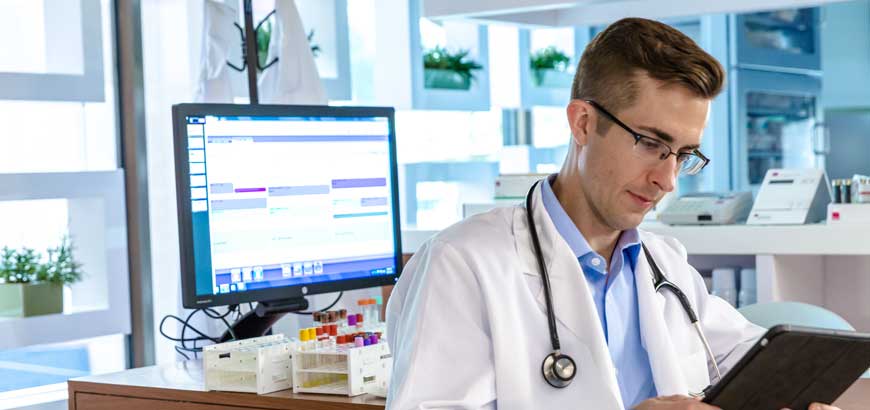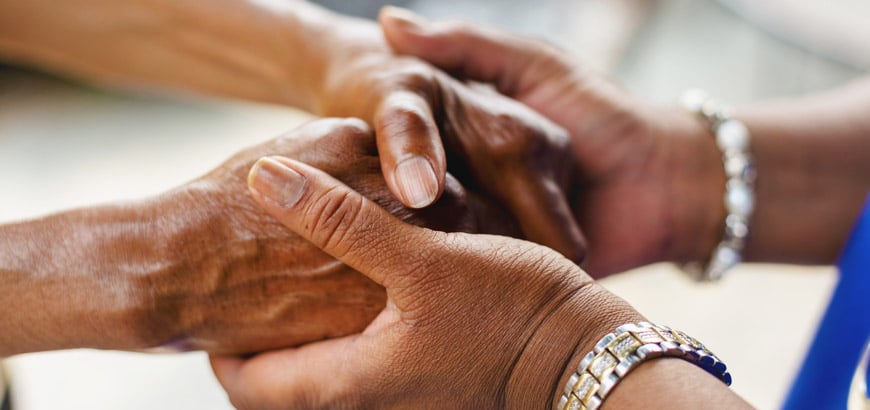Read time: 4.5 minutes
For decades, clinical trials have long served as a prerequisite for how therapies are approved for commercial use. Yet clinical trials often fail to reflect the actual patient population beyond a trial setting. Challenges that face clinical trials can include insufficient patient diversity, a lack of accessibility to trial locations, poor health education, and limited awareness of available trials within local communities. This means the population taking part in a clinical trial may not truly reflect the population ultimately taking the drug in the real world.
Fortunately, there’s another promising option beyond the data gathered from clinical trials that researchers are using to evaluate much-needed cancer drugs in development.
Using real-world data to push clinical research forward
Enter real-world data (RWD). RWD is information collected as a matter of course during a patient’s treatment—including, in some cases, the very same data a clinical trial would collect. In cancer research, this data could include diagnoses, disease stage, cancer progression, treatment and reactions to medications. It can be gleaned from electronic health records (EHRs), insurance claims, and even mobile devices and fitness trackers.
Analyzing RWD yields real-world evidence (RWE). Both types of information offer vast promise, something the federal government recognized in 2016 when the 21st Century Cures Act laid the groundwork for the use of RWD and RWE to support FDA decisions about new medical devices or drug indications.
“There has been a proliferation of data sources that provide information around patient health and their interactions with healthcare systems,” says Vasu Chandrasekaran, vice president of real-world data and analytics at Ontada, a McKesson business that specializes in oncology data science and technology. “Leveraging real-world data can provide a comprehensive understanding of the effectiveness of new drug therapies.”
Establishing a standard-of-care trial
Let’s look at how RWD can be put to use. Say a biopharma company has a new drug that targets a rare mutation in cancer. It’s ready to be tested in a clinical trial of 100 patients who will be compared with another 100 who received an older, standard-of-care medication.
“If the only patients eligible for the trial are those with the specific genetic mutation the drug is designed to target, it’s very hard to get enough patients to do a prospective randomized trial,” says Marcus Neubauer, M.D., chief medical officer for The US Oncology Network.
That’s where a retrospective, standard-of-care trial comes in. In this type of trial, enough past patients exist to assemble a historical control group. These anonymized patients have already been treated with the standard-of-care medication, so data collected during their care, which is easily gathered from a practice’s EHR, can be used in the trial.
These patients’ outcomes—how their cancer responded or how long they lived—can then be compared with those of the 100 counterparts who are currently receiving the investigational drug. Statistical methods can ensure the two groups are reasonably comparable. The resulting information can help demonstrate to regulatory agencies that a new therapy is safe.
In 2017, McKesson prepared and supplied analysis from a standard-of-care trial for a drug that treats metastatic Merkel Cell Carcinoma (mMCC), a rare form of skin cancer. The trial helped establish the first-ever FDA approval of a first-line therapy for mMCC. It was the first time that RWD, which in this case was pulled from Ontada’s iKnowMed EHR, was part of a regulatory approval in oncology.
“Seeing the field evolve to where real-world data is gaining more and more acceptance for demonstrating the benefits and risks of drug products is what motivates my team.”
Speeding precision medicine
Precision medicine—an approach in which an individual’s genetics, environment and even lifestyle are factored into their treatment—is another area that has benefited from the use of RWD and RWE.
Imagine you’re an oncologist with an elderly patient whose cancer has a rare mutation, one you’ve seen only a few times in your career. How will that cancer respond to standard treatment? After all, no clinical trial has examined this very unique group of people.
Real-world data comes to the rescue. You can use an EHR, like iKnowMed, to gather the records of patients who share the same mutation, then examine how they responded to a particular drug regimen. Did they experience complications? How long did it take their cancer to progress?
“All of a sudden, you’ve learned a lot more about this particular drug in the real world,” says Dr. Neubauer. “If you learn, for example, that nobody over age 70 benefited from that drug, you might decide to personalize your patient’s treatment by avoiding it.”
Real-world data, Chandrasekaran says, can help biopharma companies determine “those additional factors, those comorbidities that could play impactful roles in either the effectiveness of the drug or the overall outcomes a patient might experience.”
Real-world data brings purpose
Amid the patient barriers that leading therapies can face, real-world data provides many of them a map – both for clinical trials and for the rapidly expanding horizons of precision medicine.
“With all the information available, it’s a question of, ‘Why would we not be using this data?’,” says Chandrasekaran. “Seeing the field evolve to where real-world data is gaining more and more acceptance for demonstrating the benefits and risks of drug products is what motivates my team.”
With regard to McKesson’s mMCC RWD-enabled approval, he adds, “There are people alive today because they got the drug. I tell my team, ‘You may not be seeing patients in clinic. But you are saving lives.’”




Share
Post
Post
Email